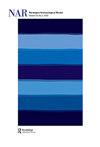三只小鸟:类型学思想的重组
IF 1.1
3区 历史学
0 ARCHAEOLOGY
引用次数: 0
摘要
摘要考古学家用来对文物进行分类并按时间和文化对其进行定位的类型学是该学科的重要工具。然而,如果不加以质疑,它们往往会对过去产生简化和本质化的理解。像所有的理论干预一样,集合理论质疑那些毫无疑问的东西,在这种情况下,它要求考古学家从根本上重新思考世界的关系,以及非人类和非生物(如石头)的力量和活力。在本文中,我们采用基于组合的方法来解决一个古老的类型学问题-分类鸟石。自19世纪中期以来,收藏家和考古学家根据进化或文化历史原则对美国东北部发现的鸟石进行分类。这些方法很少关注不同种类的石头,通常认为鸟石是规范性思维的被动反映,只有三种特定的文化类型。在这里,我们探索考古学家如何“重新组合”类型学思想,通过分析和思考大量不同材料的鸟石样本来发现远不止三只小鸟。认识到不同石头的共同和特定能力如何积极地促进了鸟石形态的多样性,使它们成为单一和不断变化的组合,同时强调了质疑类型学和材料类别的稳定性的潜力。作者感谢《挪威考古评论》的编辑人员,两位匿名同行评议人员就如何改进文章提供了有益的建议,并感谢皇家安大略博物馆美洲考古部门的Justin Jennings博士和April Hawkins博士对他们研究的支持。披露声明作者未报告潜在的利益冲突。注1:这个样本排除了所有来自已知埋葬环境的鸟石,以及那些形状痕迹表明可能是伪造的鸟石这个总数包括了所有不同的眼-脚分组。然而,它没有考虑到虚幻眼睛的存在(这将使总数达到46组),也不包括鸟石预制件和缺少或不完整眼睛或基座的鸟石。tiziana Gallo的研究得到了安大略省考古学Rebanks博士后奖学金的支持。本文章由计算机程序翻译,如有差异,请以英文原文为准。
Three Little Birds: Reassembling Typological Thought
AbstractThe typologies that archaeologists use to classify artefacts and situate them chronologically and culturally are crucial tools of the discipline but; when left unquestioned, however, they tend to produce reductive and essentializing understandings of the past. Like all theoretical interventions, assemblage theory questions the unquestioned, in this case, asking archaeologists to radically rethink the relationality of the world and the power and vibrancy of nonhuman and nonliving things like stone. In this article, we take an assemblage-based approach to an old typological problem – sorting birdstones. Since the mid-19th century, collectors and archaeologists categorized birdstones found throughout the American Northeast according to evolutionary or culture-historical principles. These approaches paid little attention to different varieties of stone, often regarding birdstones as if they were passive reflections of normative mindsets that came in only three culture-specific types. Here, we explore how archaeologists might ‘reassemble’ typological thought, analysing and thinking through a large sample of materially varied birdstones to find much more than three little birds. Recognizing how the shared and specific capacities of different stones actively contributed to the multiplicity of birdstone morphologies resituates them as singular and changing assemblages while highlighting the potentials of questioning the fixity of both typological and material categories at large. AcknowledgmentsThe authors thank the editorial staff of Norwegian Archaeological Review, two anonymous peer reviewers for offering helpful suggestions on how to improve the article, and Dr Justin Jennings and April Hawkins of the Royal Ontario Museum, Archaeology of the Americas Department, for supporting their research.Disclosure statementNo potential conflict of interest was reported by the author(s).Notes1 This sample excludes all birdstones that are from known burial contexts and those whose shaping traces indicate possible forgery.2 This total includes all different eye-base-feet groupings. It however does not consider the presence of illusory eyes (which would bring the total of groupings up to 46) and excludes birdstone preforms and birdstones with missing or incomplete eyes or bases.Additional informationFundingTiziana Gallo’s research is supported by a Rebanks Postdoctoral Fellowship in Ontario Archaeology.
求助全文
通过发布文献求助,成功后即可免费获取论文全文。
去求助
来源期刊

Norwegian Archaeological Review
ARCHAEOLOGY-
CiteScore
2.10
自引率
0.00%
发文量
13
期刊介绍:
Norwegian Archaeological Review published since 1968, aims to be an interface between archaeological research in the Nordic countries and global archaeological trends, a meeting ground for current discussion of theoretical and methodical problems on an international scientific level. The main focus is on the European area, but discussions based upon results from other parts of the world are also welcomed. The comments of specialists, along with the author"s reply, are given as an addendum to selected articles. The Journal is also receptive to uninvited opinions and comments on a wider scope of archaeological themes, e.g. articles in Norwegian Archaeological Review or other journals, monographies, conferences.
 求助内容:
求助内容: 应助结果提醒方式:
应助结果提醒方式:


